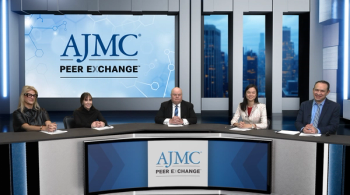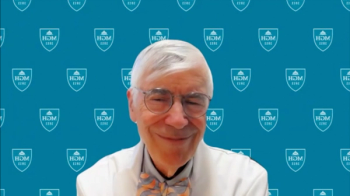
Considerations for Using CGRP Receptor Antagonists for Migraine
Peter L. Salgo, MD: What is your experience away from money? Let’s talk about efficacy among patients using the drugs. You have experience with a large group. Do the drugs work for them?
Jill Dehlin, RN: I mentioned that I did this quick and dirty little survey, and 70% of the people of this N of 140 group have not tried it.
Peter L. Salgo, MD: Not tried it?
Jill Dehlin, RN: They have not tried it. Only 1 person said that they’ve had great results. Anecdotally, I’ve talked to other people who are in clinical trials and there are people who are considered super responders. Everybody wants to wear the cape and be a super responder, right? For those people, their lives are changed. But one thing that I want to mention is that in the clinical trials, the guideline was greater than 50% efficacy in the month. For somebody with migraine, you’re looking at a pain scale of 1 to 10. If you’re at a pain level of 8 and then you’re at a pain level of 4 with this new drug, you can function. It’s life changing. You can participate in your life. You can go to work with a pain level of 4, but at a level of 8, you’re in bed.
Peter L. Salgo, MD: I’m trying to understand what you’re telling me. Is it that patients expect to go to level 0 and don’t?
Jill Dehlin, RN: No. What I’m saying is that the statistics for the clinical trials reflect greater than 50% efficacy. In the real world, if somebody has a reduction in the intensity of their migraine attacks, it can be life changing.
Malaika Stoll, MD, MPA: That really helped me, when we were talking earlier, to understand that. When you look at that data, maybe it doesn’t look that dramatic. You have to think about the individuals for whom this really works and how these individuals have their lives changed.
Peter L. Salgo, MD: Let me go back because I’m confused.
Malaika Stoll, MD, MPA: OK.
Peter L. Salgo, MD: You described going from a pain level of 8 to a pain level of 4. That’s 50%.
Peter Goadsby, MD, PhD: Well, in the clinical trials, the 50% has been referred to as migraine days.
Peter L. Salgo, MD: Oh, migraine days.
Peter Goadsby, MD, PhD: In a clinical trial, about half of the people will get a 50% reduction, about a third will get a 75% reduction, and about 15% will get a 100% reduction. What’s been discussed is not the number of migraine days going away but, within the same migraine day, having reduced severity. That wasn’t captured well at all in the clinical trials. When you talk to patients in the open-label extension studies, 2 benefits come to mind. One is that they have less migraine days. The other benefit is that on the days when they still have a problem, they have less of a problem. I think that the clinical trials lowballed what people tell you is actually happening to them.
Peter L. Salgo, MD: That’s what was confusing me. In other words, the criteria in the study are not the same criteria you’re discussing.
Jill Dehlin, RN: The real-life results.
Peter L. Salgo, MD: The real-life experience. And so, what are the plans for using the study criteria or the real-life criteria?
Malaika Stoll, MD, MPA: Well, it’s really not so different because we’re trying to structure the plan to say that those who really benefit from it should be getting it. Those who could benefit from something else go with that instead or those who don’t benefit at all from it don’t get it. That’s the vision. That’s the purpose of the plan. That’s the idea.
Peter L. Salgo, MD: Now, how do you monitor that? It’s tough.
Malaika Stoll, MD, MPA: Right.
Peter L. Salgo, MD: In other words, it’s easy to say that it’s binary. “I took the drug and my migraines went away.” But how do you monitor, from a cost-effective standpoint and an improvement standpoint? “I took the drug and things are better.”
Peter Goadsby, MD, PhD: We’ve made it a bit difficult for the plans or for the payers.
Peter L. Salgo, MD: How so?
Peter Goadsby, MD, PhD: By using these migraine days.
Peter L. Salgo, MD: It’s the wrong metric?
Peter Goadsby, MD, PhD: It’s 1 metric. It’s not the only metric. If you’re doing a regular study for regulatory purposes, you can’t have a half-dozen primary endpoints. You’ve got to pick someplace to start that’s solid and clear to measure, and these migraine days are what’s been used. I think practice will evolve. The plans will see the initial data. Hopefully, they’ll walk down the road with the patients and the doctors understanding that there are other dimensions to the benefit. You can’t expect the plans to suddenly realize that there are all of these other things going on when the actual clinical trials talked about days. I think this is a totally new area with this totally new therapy. We need to evolve our understanding of what happens a bit so that we can get it right for the patients.
Malaika Stoll, MD, MPA: Right. You were saying that the word “prior authorization” is a bad word. It doesn’t sound good. The alternative is, don’t put it on the formulary and say no. It’s on the formulary and there’s criteria, and, again, there’s a human who is going to be helping decide, maybe in conversation with the patient’s doctor.
Newsletter
Stay ahead of policy, cost, and value—subscribe to AJMC for expert insights at the intersection of clinical care and health economics.



























































